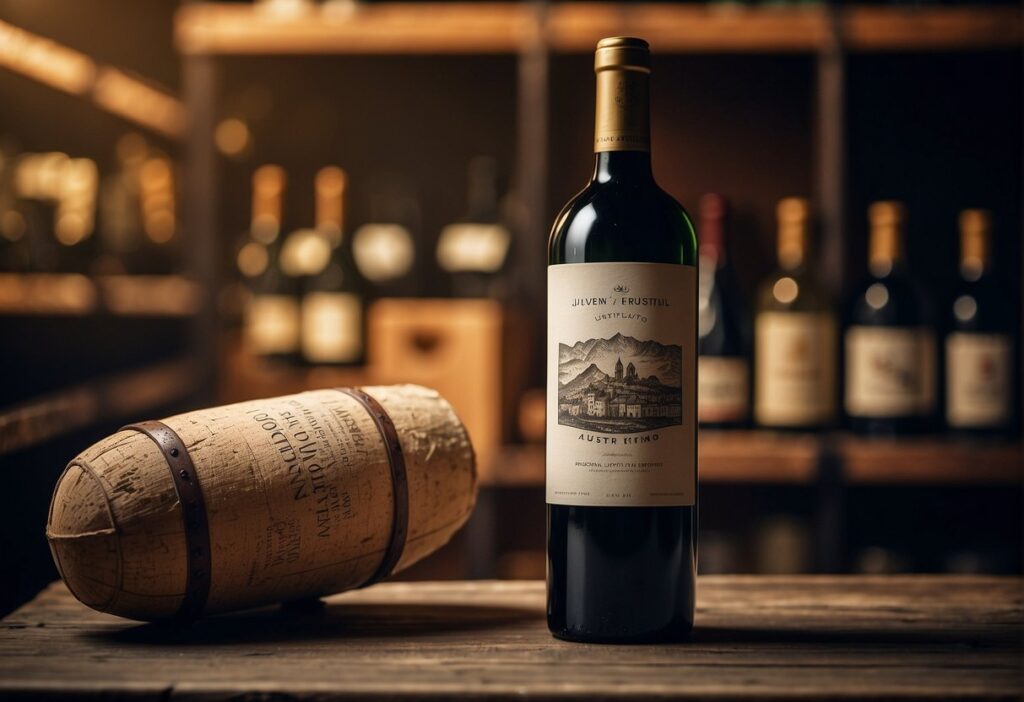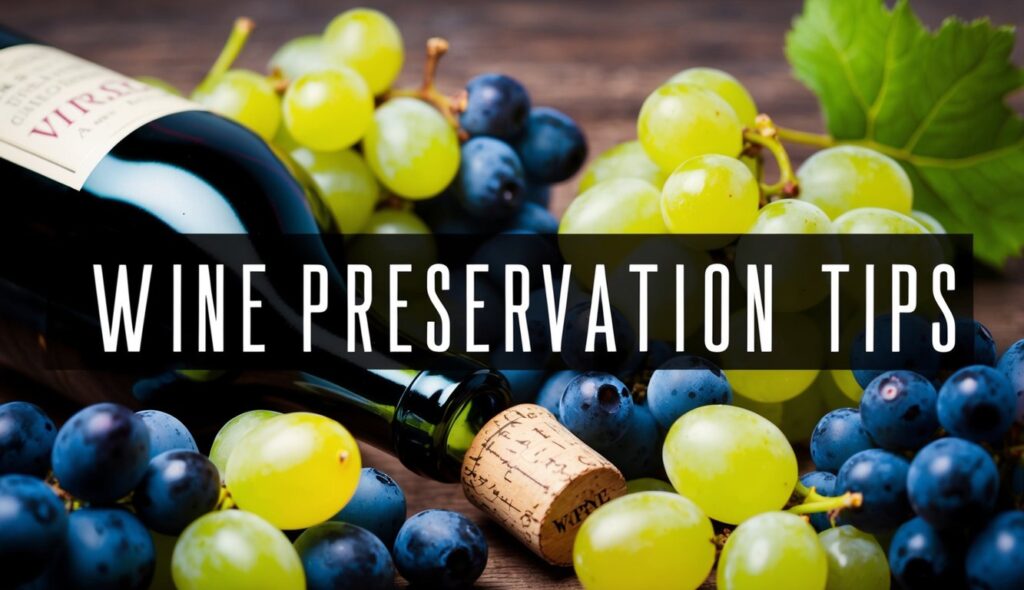Taking proper care of your wine bottles is essential to ensure the quality of your wine. Simple practices like cleaning and storing your bottles correctly can make a significant difference. Keeping the bottles clean and stored at the right temperature helps preserve the wine’s flavor and aroma.

Before re-corking a bottle, ensure that both the bottleneck and cork are free from residue. Using a soft cloth to gently wipe the rim can prevent any unwanted tastes from lingering in the bottle.
When it comes to cleaning, using hot, soapy water to soak bottles is effective for removing labels and any stubborn residues. If residue remains, a scraper or rough sponge can be helpful.
Utilizing a wine bottle cooler properly can also play a role in maintaining wine quality. Pre-chilling the cooler by placing it in the fridge for a couple of hours can enhance its performance. This helps maintain the desired temperature and ensures that your wine is served at its best.
Fundamentals of Wine Storage
Proper wine storage is essential to maintain the quality and flavor of your wines. Keeping conditions consistent and choosing the right storage setup are crucial for preserving your collection, be it champagne or Bordeaux.
Understanding Wine Storage Requirements
To keep your wines in optimal condition, maintain consistent temperature between 45-65°F (7-18°C) to prevent spoilage. Humidity is equally important; aim for about 50-75% to keep corks from drying out, as this prevents air from seeping into the bottle and spoiling the wine.
Minimize exposure to light, especially UV rays, by storing wines in a cool, dark place. Movement can be harmful too, so avoid excessive vibration by choosing a stable location away from appliances or machinery.
Selecting the Right Wine Cellar
Choosing the right storage solution depends on your wine collection’s size and needs. For smaller collections, consider a wine fridge or chiller as space-saving solutions. Each provides controlled environments to maintain temperature and humidity levels effectively.
For larger collections, a dedicated wine cellar might be best. This allows for greater capacity, organization, and fine-tuned storage conditions. Ensure the cellar or fridge provides UV protection to guard against harmful light. Investing in the right setup ensures your champagne and Bordeaux stay preserved, ready to enjoy at their finest.
Optimizing Wine Bottle Preservation
Proper wine preservation focuses on maintaining optimal conditions to prolong the life of an open bottle. Key factors include temperature control and maintaining ideal humidity levels. Paying attention to these aspects can help slow down oxidation and keep your wine fresh for longer.
Temperature Control Techniques
Temperature is crucial when preserving an open bottle of wine. Refrigeration is a simple way to slow down the aging process. Storing both red and white wines in the fridge can extend their freshness. For red wines, remove the bottle about 30 minutes before serving to let it reach the desired temperature.
Using a wine fridge is another effective option. It offers more precise control compared to a regular fridge, maintaining a consistent environment.
Always store wine at around 55°F (13°C) for best results, but adjust slightly based on wine type. Remember, avoiding temperature fluctuations is essential, as this can negatively impact wine quality.
Maintaining Ideal Humidity Levels
Humidity levels in wine storage are often overlooked but play a significant role in wine preservation. Maintaining about 60-70% humidity helps keep corks from drying out, which prevents air from seeping into the bottle. If air gets in, it can spoil the wine faster.
Invest in a hygrometer to monitor humidity levels accurately. You can place a small dish of water in your wine fridge to maintain proper humidity. Proper ventilation also ensures mold does not form, keeping both the wine and its surroundings in good condition.
Wine Fridge Maintenance

Maintaining a wine fridge is crucial for preserving your wine collection. Regular cleaning and addressing moisture issues are key to ensuring optimal performance and longevity.
Cleaning and Care for Wine Fridges
To keep your wine fridge in top shape, it’s important to clean both the interior and exterior regularly. Start by unplugging the unit and removing all bottles. Take out any shelves or drawers, and wash them separately with warm, soapy water.
For the interior, use a soft cloth with a mild detergent to wipe surfaces. Avoid harsh chemicals that can leave residues.
Cleaning the filter is also essential. Some fridges have replaceable filters, so check the manufacturer’s instructions for replacement guidelines. Regular filter maintenance helps maintain air quality inside the fridge.
Preventing and Addressing Moisture Build-Up
Moisture can cause problems like mildew and damage to wine labels. Ensure proper sealing around the fridge door to prevent moisture intrusion.
Regularly check and clean the door seals.
If you notice excess moisture, it might be due to temperature fluctuations. Keep the fridge in a stable environment, away from direct sunlight or vents. You can also use silica gel or a similar drying agent inside the fridge to absorb extra moisture.
Regular inspections help you address issues before they escalate, ensuring your wine bottles remain in perfect condition. For more maintenance tips, visit HomeAlliance cleaning solutions.
Technical Considerations

When it comes to maintaining your wine bottles, technical aspects like airflow and protection from light play a crucial role. Well-planned ventilation and understanding the effects of UV rays can greatly extend the life of your wines.
Ventilation and Clearance
Good ventilation is vital for preventing unwanted odors and maintaining a consistent ambient temperature. Ensure there is enough clearance around your wine storage area to allow for air movement.
This helps in regulating temperature fluctuations that can affect your wine’s quality.
Create space between the walls and your storage unit. This promotes air circulation, which prevents the build-up of heat and humidity. Avoid placing your wine storage near vents or windows where temperature changes are common.
Keeping a stable environment through proper ventilation will help preserve your wine’s integrity.
Understanding UV Rays and Carbon Filtration
UV rays can be harmful to wine, causing chemical reactions that spoil the flavor. Use protective measures like UV-resistant glass or placing wine away from direct sunlight to shield your bottles.
Carbon filtration is another important tool. Filters remove impurities from the air, preventing them from affecting the wine.
Consider using carbon filtration systems to maintain air quality. This is especially useful in enclosed spaces where natural airflow may be limited. Investing in a good filtration system ensures that your wine is protected from external contaminants that might otherwise compromise its quality.
Advanced Wine Bottle Care

Proper wine bottle care extends the life of your collection. It requires attention to quality accessories and routine checks. Maintaining the right conditions ensures your wine ages gracefully.
Investing in Quality Accessories
Selecting the right accessories can make a big difference in wine preservation. Wine coolers with precise temperature controls are crucial. These devices protect your wine from temperature fluctuations, which can spoil your collection.
Look for models that offer proper ventilation to maintain consistent cooling.
High-quality corkscrews and foil cutters also play a role. They preserve the cork’s integrity and prevent cork fragments from contaminating your wine.
Consider using a wine refrigerator designed for long-term storage. It helps keep wines at their ideal temperature and humidity levels, ensuring each bottle stays in top shape for years.
Routine Inspection and Maintenance
You must regularly check your wine storage conditions. Make sure your wine cooler is functioning correctly. It should maintain steady temperatures and proper humidity. Also, examine each bottle for signs of leakage or damaged corks. This will prevent air from entering and spoiling the wine.
Dusting off bottles and inspecting labels will keep your collection tidy and organized. You should also assess the seals and corks periodically. If bottle seals become compromised, it can lead to oxidation or spoilage. Proper ventilation in your storage area ensures efficient cooling and prevents mold growth. Paying attention to these details will preserve the quality and enjoyment of your wine.

